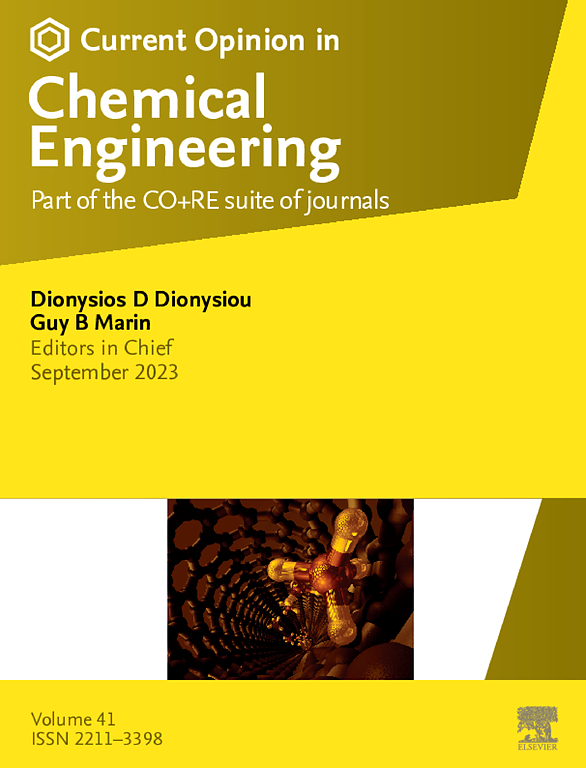水裂解制氢光催化浆体反应器
IF 6.8
2区 工程技术
Q1 BIOTECHNOLOGY & APPLIED MICROBIOLOGY
引用次数: 0
摘要
本文综述了光催化photocrec water - ii装置的性能,该装置由近紫外或可见光驱动,通过水裂解制氢。利用蒙特卡罗方法建立了辐射方程及其解,并用宏观辐射天平进行了模拟实验验证。合成了一种具有良好流化性能的介孔锐钛矿基质。用QYs(量子产率)和PTEFs(光催化热力学效率因子)来评价光催化剂的性能。结果表明,在近紫外和乙醇作为清除剂的photocrec Water-II中,tio2 -贵金属光催化剂的QYs和PTEFs分别为0.35和0.247。报道的结果为在升级后的浆状photocrec Water-II反应器中建立所需的辐照、光催化剂负载、乙醇清除剂浓度和pH操作条件铺平了道路,以生产商业上大量的H2。本文章由计算机程序翻译,如有差异,请以英文原文为准。
Photocatalytic slurry reactor for hydrogen production via water splitting
This article reviews the performance of a photocatalytic Photo-CREC Water-II unit powered by near-UV, or alternatively by visible light, for hydrogen production via water splitting. The radiation equation and its solution are established via a Monte Carlo (MC) method, with simulations being validated experimentally with macroscopic radiation balances. A mesoporous anatase matrix with added palladium photocatalyst with good fluidizability properties is synthesized. The photocatalyst performance is evaluated using QYs (quantum yields) and PTEFs (photocatalytic thermodynamic efficiency factors). It is shown that the TiO2–noble metal photocatalyst displays, in Photo-CREC Water-II using near-UV and ethanol as a scavenger, QYs and PTEFs of 0.35 and 0.247, respectively. The reported results pave the way for establishing the irradiation, the photocatalyst loading, the ethanol scavenger concentration, and the pH operating conditions required in an upscaled slurry Photo-CREC Water-II reactor, for producing commercially significant amounts of H2.
求助全文
通过发布文献求助,成功后即可免费获取论文全文。
去求助
来源期刊

Current Opinion in Chemical Engineering
BIOTECHNOLOGY & APPLIED MICROBIOLOGYENGINE-ENGINEERING, CHEMICAL
CiteScore
12.80
自引率
3.00%
发文量
114
期刊介绍:
Current Opinion in Chemical Engineering is devoted to bringing forth short and focused review articles written by experts on current advances in different areas of chemical engineering. Only invited review articles will be published.
The goals of each review article in Current Opinion in Chemical Engineering are:
1. To acquaint the reader/researcher with the most important recent papers in the given topic.
2. To provide the reader with the views/opinions of the expert in each topic.
The reviews are short (about 2500 words or 5-10 printed pages with figures) and serve as an invaluable source of information for researchers, teachers, professionals and students. The reviews also aim to stimulate exchange of ideas among experts.
Themed sections:
Each review will focus on particular aspects of one of the following themed sections of chemical engineering:
1. Nanotechnology
2. Energy and environmental engineering
3. Biotechnology and bioprocess engineering
4. Biological engineering (covering tissue engineering, regenerative medicine, drug delivery)
5. Separation engineering (covering membrane technologies, adsorbents, desalination, distillation etc.)
6. Materials engineering (covering biomaterials, inorganic especially ceramic materials, nanostructured materials).
7. Process systems engineering
8. Reaction engineering and catalysis.
 求助内容:
求助内容: 应助结果提醒方式:
应助结果提醒方式:


